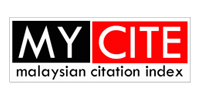Mechanical and Thermal Properties of PP/HDPE Blends Reinforced with ZnO Nanoparticles for Industrial Applications
DOI:
https://doi.org/10.58915/ijneam.v17i3.1173Keywords:
PP, HDPE, Blend, ZnO nanoparticlesAbstract
In this work, a polymeric blend of polypropylene (PP) and high-density polyethylene (HDPE) was prepared with different weight percentages. Zinc oxide nanoparticles (ZnO) were added to the 90/10 and 80/20 blends with different weight ratios (1%, 2%, and 3%) to study their effect on both the mechanical and thermal properties of the PP/HDPE blends. A twin-screw extruder was used for the preparation of polymeric blends and their composites. Mechanical properties (tensile properties and hardness) were studied. Thermal properties using Differential Scanning Calorimetry (DSC) were investigated. Fourier transform infrared (FTIR) was used to predict the change in chemical structure. Results for PP/HDPE blends show that both tensile strength and hardness decrease as the amount of HDPE increases due to immiscibility, and these properties are improved by the addition of ZnO nanoparticles. Thermal properties from DSC show that the melting temperature Tm, crystallization temperature Tc were improved by the ZnO addition, and the degree of crystallinity improved only for the90/10 blend. FTIR shows that there is only a physical interaction, not a chemical one.

















